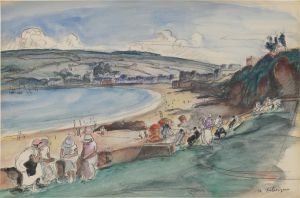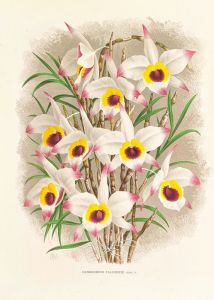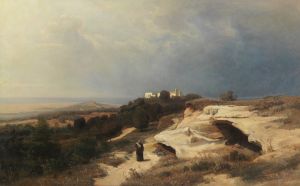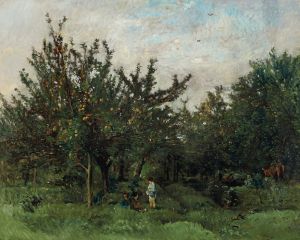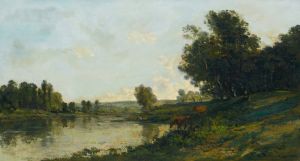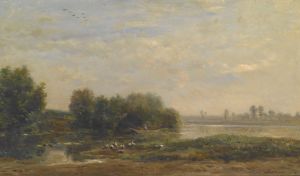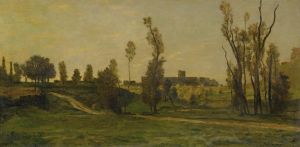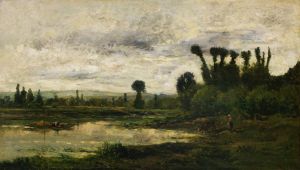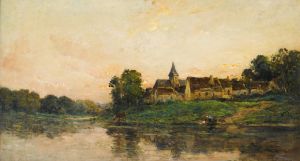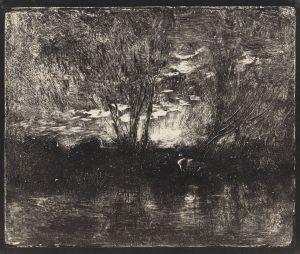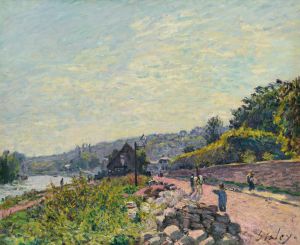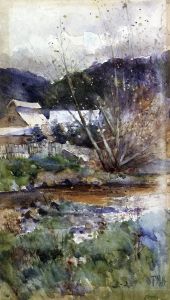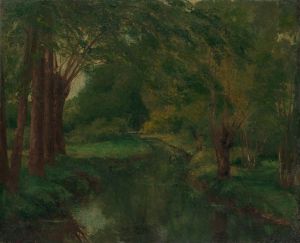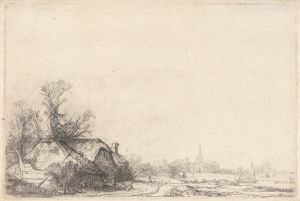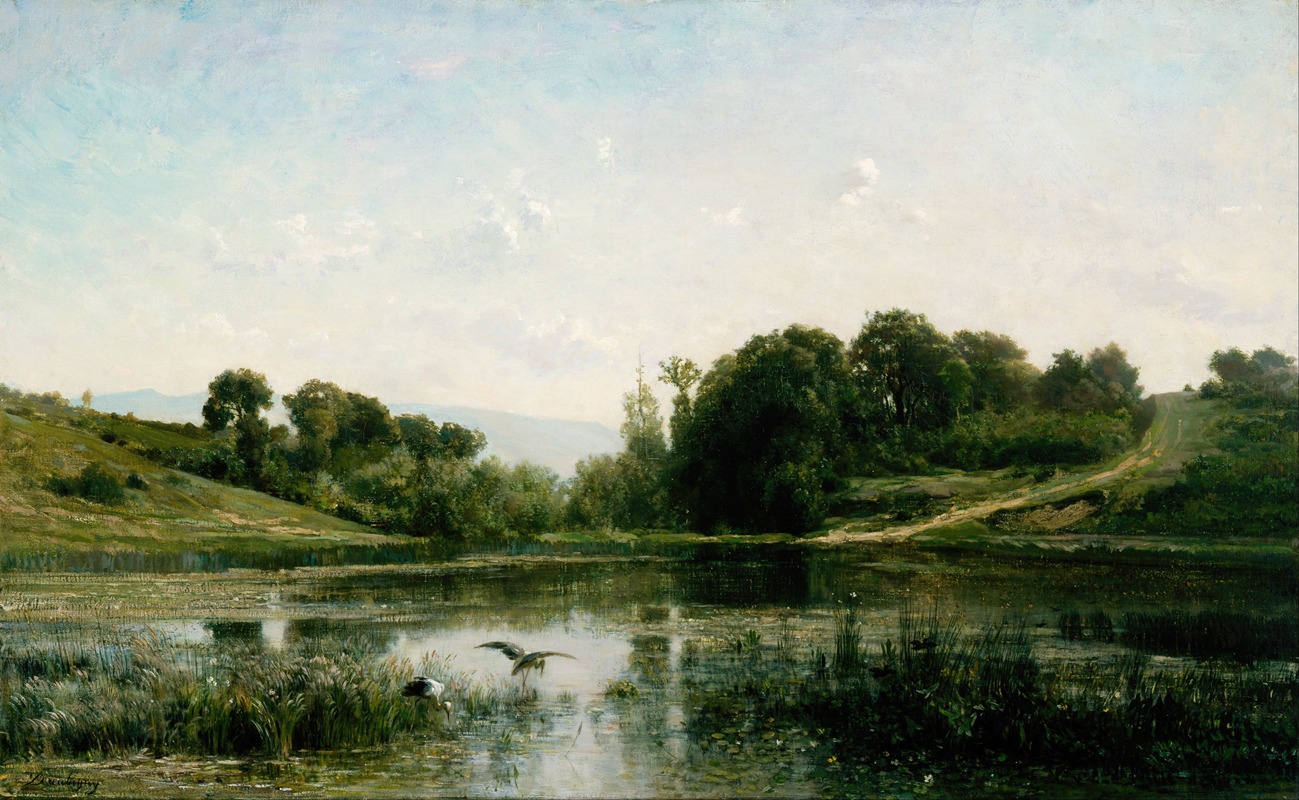
The Ponds of Gylieu
A hand-painted replica of Charles François Daubigny’s masterpiece The Ponds of Gylieu, meticulously crafted by professional artists to capture the true essence of the original. Each piece is created with museum-quality canvas and rare mineral pigments, carefully painted by experienced artists with delicate brushstrokes and rich, layered colors to perfectly recreate the texture of the original artwork. Unlike machine-printed reproductions, this hand-painted version brings the painting to life, infused with the artist’s emotions and skill in every stroke. Whether for personal collection or home decoration, it instantly elevates the artistic atmosphere of any space.
Charles François Daubigny (1817-1878) was a prominent French painter associated with the Barbizon School, a movement that emphasized naturalistic landscape painting. One of his notable works is "The Ponds of Gylieu," which exemplifies his mastery in capturing the serene beauty of rural France.
"The Ponds of Gylieu" is a landscape painting that showcases Daubigny's skill in depicting water and reflections, a recurring theme in his oeuvre. The painting features a tranquil pond surrounded by lush vegetation and trees, with the calm water surface reflecting the sky and the surrounding greenery. The composition is balanced and harmonious, inviting the viewer into a peaceful, almost idyllic natural setting.
Daubigny was known for his innovative techniques and his ability to convey the transient effects of light and atmosphere. In "The Ponds of Gylieu," he employs a soft, almost impressionistic brushwork that captures the subtle variations in light and color. This approach would later influence the Impressionist movement, with artists like Claude Monet drawing inspiration from Daubigny's work.
The painting is also notable for its use of color. Daubigny uses a palette of greens, blues, and earthy tones to create a sense of depth and realism. The reflections in the water are particularly well-executed, demonstrating his keen observation of nature and his ability to translate it onto canvas.
Daubigny's connection to the Barbizon School is evident in "The Ponds of Gylieu." The Barbizon artists were known for their commitment to painting en plein air (outdoors), capturing the natural world directly from life. This method allowed them to observe and depict the changing effects of light and weather with greater accuracy. Daubigny was a pioneer in this approach, often working from his studio boat, which he used to navigate rivers and ponds, bringing him closer to his subjects.
"The Ponds of Gylieu" reflects Daubigny's dedication to portraying the French countryside with authenticity and sensitivity. His work often focused on the simple, unspoiled beauty of rural landscapes, eschewing the dramatic or grandiose in favor of the everyday and the serene. This focus on the ordinary yet beautiful aspects of nature was a hallmark of the Barbizon School and a precursor to the Impressionist movement.
Throughout his career, Daubigny received numerous accolades and his work was exhibited widely. He was awarded the Legion of Honor in 1859, a testament to his contributions to French art. His influence extended beyond his lifetime, as his techniques and themes continued to resonate with future generations of artists.
"The Ponds of Gylieu" remains a significant work within Daubigny's portfolio, illustrating his ability to blend technical skill with a deep appreciation for the natural world. It stands as a testament to his role in the evolution of landscape painting in the 19th century and his lasting impact on the art world.





